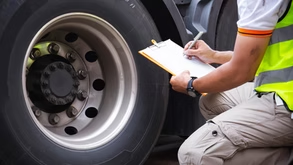
Drug and alcohol testing is one of the most important parts of Department of Transportation (DOT) compliance. Employers often ask, “How often does DOT require drug testing?” and the answer depends on the different situations drivers may face.
Testing is not a one-time event but part of an ongoing process designed to keep roads safe, protect the public, and maintain legal operations for companies. As an employer, it is important to understand when these tests take place, how they work, and what steps to expect so that operations stay within DOT rules.
Pre-Employment Testing
Before a driver takes the wheel, pre-employment drug testing sets the foundation for safety. No one can begin driving a commercial motor vehicle until a negative test result has been received. This step is not optional and serves as the first safeguard in the testing process.
Employers have a duty to request and review the results before assigning any driving tasks. The pre-employment test is important because it prevents drivers with recent drug use from getting behind the wheel. For companies, it gives peace of mind that new hires meet the standards before they are added to the team.
Pre-employment testing also helps employers build a culture of accountability from the very start. It communicates that safety is a shared responsibility between the company and the driver.
Taking this step seriously allows businesses to establish a standard that carries throughout the driver’s career. It also supports a strong reputation with customers and partners who rely on safe and dependable operations.
Post-Accident Testing
Following certain accidents, testing is required to determine if drugs or alcohol contributed to the incident. DOT regulations clearly outline when testing must occur. A crash resulting in a human fatality triggers a mandatory test under federal law.
Accidents involving serious injuries or significant vehicle damage may also require testing if the driver receives a citation. This type of testing is designed to gather accurate information after serious incidents, not to assign blame to drivers.
Employers who follow post-accident testing procedures correctly reduce the risk of disputes and liability. Documentation of the testing process provides verifiable proof that all required steps were completed, which can be crucial during investigations.
Drivers also benefit, as testing creates an objective record rather than leaving conclusions to speculation. A well-structured approach shows that companies handle incidents fairly while upholding safety responsibilities.
Random Testing
Random drug and alcohol testing occurs throughout the year and applies to all CDL drivers. The selection process is entirely unpredictable, preventing drivers from anticipating who will be tested.
Each year, the DOT sets the percentage of drivers subject to random drug or alcohol tests. Employers must adhere to the required rate and maintain accurate records of all random selections and test results. Random testing serves as a powerful deterrent to drug or alcohol use, reinforcing daily accountability for drivers.
Employers benefit because random testing promotes a safer workplace and reduces the likelihood of violations that could damage both reputation and operations. The program also creates fairness, as all drivers face the same chance of selection.
Random testing supports a consistent safety culture by removing uncertainty around standards. Drivers understand that testing is a routine part of operations, not triggered by suspicion or isolated events.
For employers, maintaining a robust random testing program demonstrates commitment to safety during audits and reassures clients that compliance and well-being are prioritized across the fleet.
Reasonable Suspicion Testing
When a supervisor observes behavior or signs that suggest a driver may be impaired, a reasonable suspicion test may be conducted. Supervisors must be trained to recognize physical, behavioral, or performance indicators of drug or alcohol use.
Decisions for testing are based on direct observation and cannot be arbitrary or speculative. This type of testing provides a safeguard for unexpected situations. Employers are responsible for acting promptly when signs of impairment appear, while drivers gain a clear understanding that being under the influence on the job is not tolerated.
Reasonable suspicion testing also strengthens employer confidence, showing that supervisors are prepared to act when needed. It establishes consistent procedures that can be applied across teams, preventing assumptions and allowing drivers to demonstrate compliance through testing. Clear rules help everyone maintain focus on safe and responsible operations.
Return-To-Duty Testing
Drivers who test positive, refuse testing, or violate DOT drug and alcohol rules must complete a return-to-duty process before resuming driving duties. This process includes evaluation by a substance abuse professional, completion of recommended steps, and a directly observed test.
Only after passing the return-to-duty test can drivers resume safety-sensitive work. The process emphasizes accountability and allows drivers to demonstrate readiness to return to duty.
For employers, it sets a firm boundary: no driver can resume work until all steps are completed and a negative test is documented. For drivers, it provides a structured path to rebuild trust and confirm adherence to safety standards.
Employers also benefit because the return-to-duty program reduces repeat violations. Its structured approach supports drivers in making positive changes while creating documented proof of compliance
Monitoring during this process reinforces that compliance is a tool for long-term safety. This gives companies reliable evidence that all standards have been met.
Follow-Up Testing
Follow-up testing applies to drivers who have completed the return-to-duty process. The substance abuse professional develops a testing plan, requiring a minimum of six directly observed tests within the first 12 months. The program can extend over several years depending on professional recommendations.
Follow-up testing holds drivers accountable even after returning to work, and employers are responsible for managing the schedule and maintaining accurate records.
This stage reinforces company standards over time. Drivers understand they are being monitored, encouraging responsible behavior and adherence to policies. Employers gain confidence that DOT rules are being met while maintaining a safer work environment. Ongoing oversight demonstrates that drug and alcohol testing is not a single step but a continuous practice that protects everyone involved.
Why Testing Frequency Matters For Employers
DOT testing is about more than following the law. It shapes the safety culture of a company, protects its reputation, and supports reliable operations. Knowing when tests are required helps employers avoid costly violations, legal issues, and loss of business opportunities.
For drivers, it creates a clear set of expectations and builds trust that every colleague is held to the same standard. Understanding the testing timeline also helps companies prepare for audits. Records of pre-employment, post-accident, random, reasonable suspicion, return-to-duty, and follow-up tests must be accurate and up to date.
Employers who prioritize testing frequency also strengthen their teams. Drivers feel supported when standards are applied evenly, and companies maintain confidence with customers and regulators. Consistency in testing practices sends a strong message that safety and compliance remain top priorities. This commitment reduces disruptions and creates stability for both employers and drivers.
At Express Compliance, LLC, we help businesses meet DOT requirements with reliable solutions tailored to fit different needs. Our team understands “How often does DOT require drug testing?” and how it integrates into broader compliance programs.
From CSA score management to DOT compliance services, clearinghouse compliance, and driver qualification file management, we cover all aspects of regulatory oversight. Additional support for ELD compliance, DOT safety inspections, and hours of service compliance ensures that drivers stay fully compliant.
For more details on building a strong testing program, contact us today.






